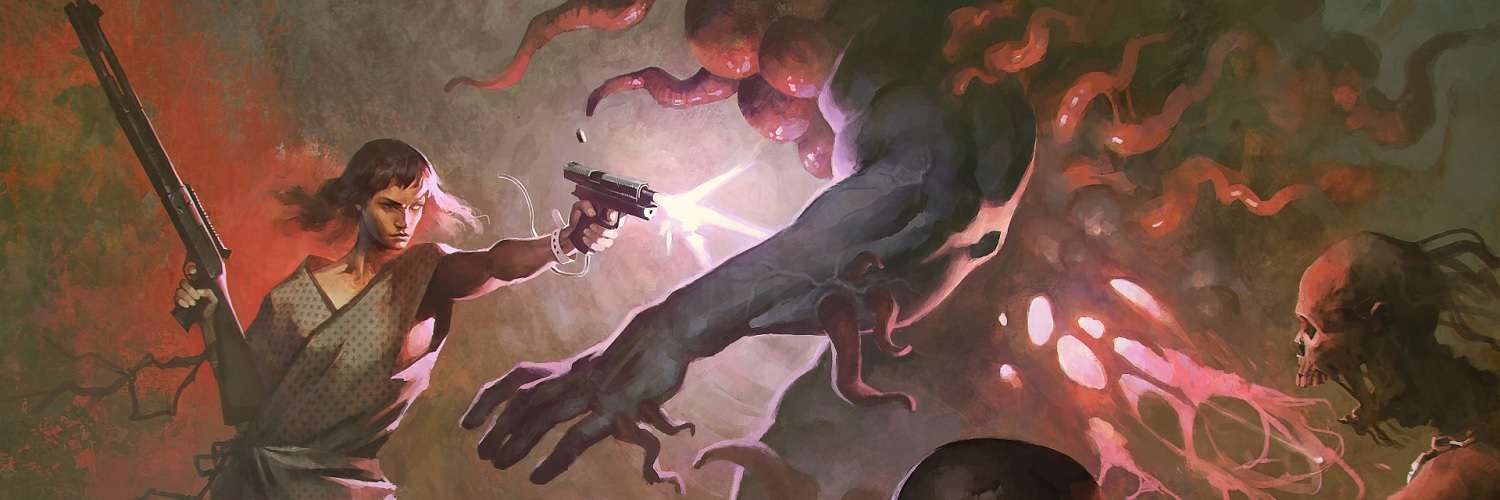
Nightmare Reaper PC Review
Normally I give a short introduction before I review a game, but there is no time for that because Nightmare Reaper is calling for me…The game is wanting me to return to its protagonist’s nightmare for more bloody, over the top, high octane action. This is a first-person shooter that delivers bang for the buck and now has opened its new game+ mode to entice me for another playthrough with stepped up difficulty – I think it wants to hurt me plenty.
Blazing Bit Games has achieved something of brilliance here. An awe-inspiring blend of modern and retro gameplay and mechanics that form a hybrid mixture of traditional first-person action with a sprinkle of roguelite elements for a sweet (or should that be bloody?), cocktail. There are many of these newly dubbed “boomer shooters” that call back to the 90s design. I am hypothesizing that Blazing Bit Games knew this and decided to offer more than a simple run down memory lane and come up with something exciting and invigorating. There are so many elements packed into this tiny package and yet all manage to work together. It might have “nightmare” in its title, but that description is far from the delights it offers.
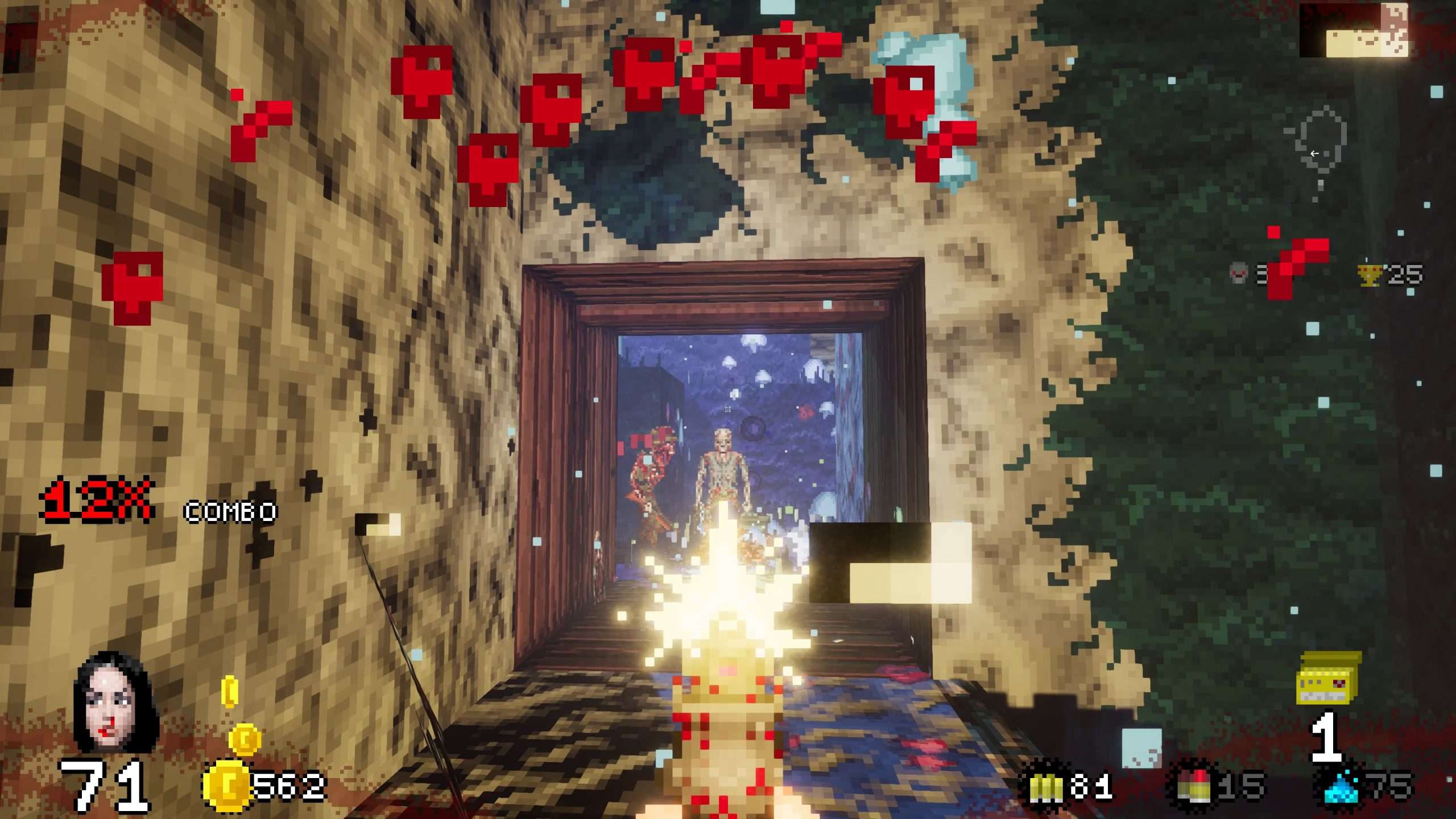
The premise of Nightmare Reaper is that player takes control over the patient, a nameless woman who is locked up within a mental asylum, most likely for her own protection. There is no real setup for the character, as at the start of the game after the first tutorial is completed, this nameless patient is locked within her hospital room with only a few things. One of these was a glittering piece of paper on a desk with a short piece of information from her doctor. Midget details are drip-fed to the player after each level is completed, which builds up to a bigger picture about the patient’s upbringing, filling in the missing gaps about her terrible life and what led her to the state she is in. Let us say her parents are simply nothing short of despicable for the hell she must have gone through.
In essence, the story is so small that it is close to non-existing, delivered in a non-intrusive way through those bits of mysterious doctor notes. This peculiar way adds so much to the general tone and setting of the game and the reason why things are structured as they are – the patient goes to sleep each day and has a nightmare that she wakes up from, these nightmares are what the player partakes in. It was fascinating enough to make me want to see what the next piece of the paper was going to say, even though it was only another five or so seconds each time, it gives enough to create your own thoughts on the matter.
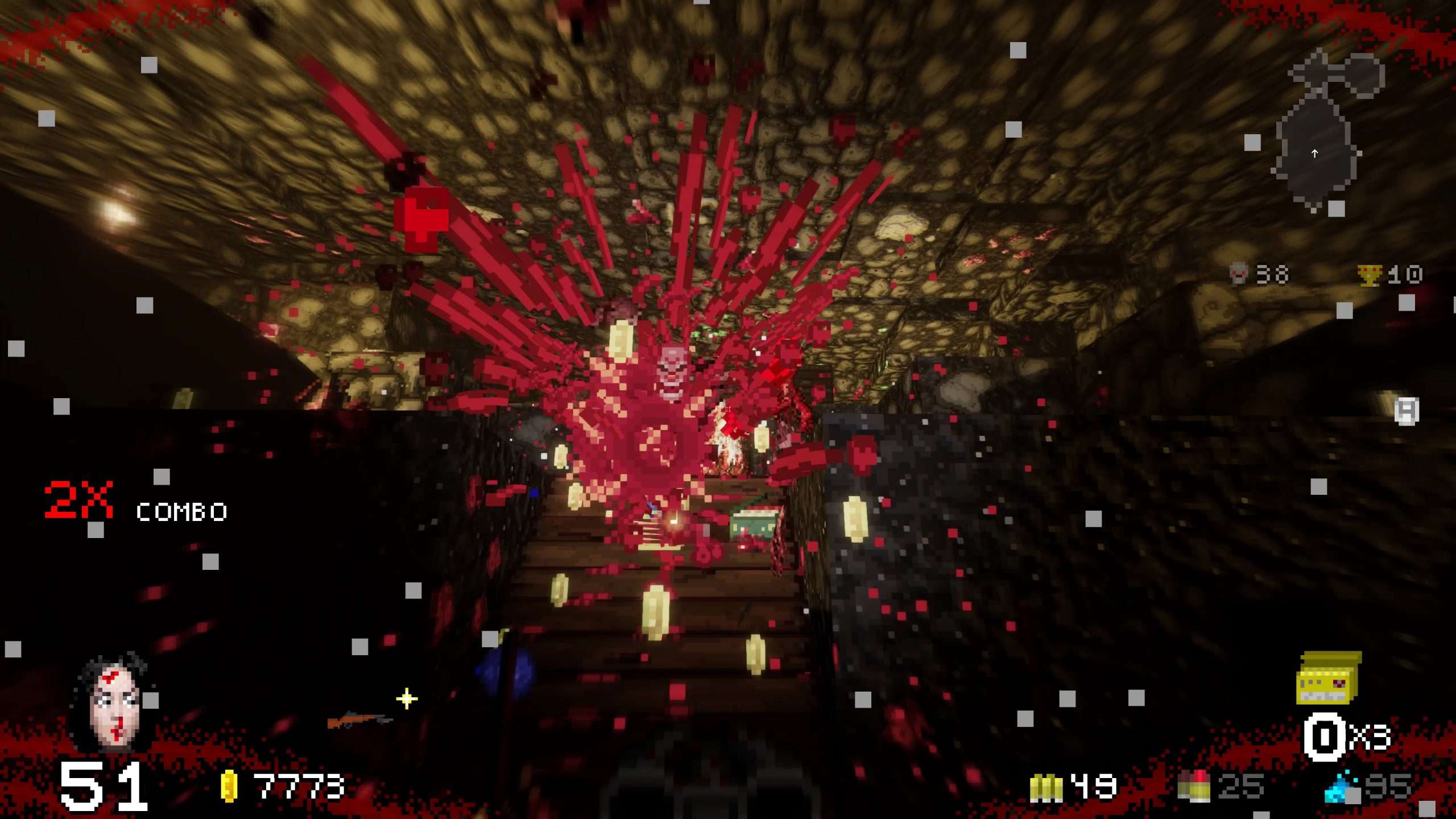
Jumping into bed starts the level. To make it clear this is not a title that fully goes with the roguelite idea, as there is a traditional progression through the levels rather than starting right from the beginning of the game after death. Players do keep any gold earned, used to unlock skills, and the main weapon equipped. The level design does have random elements to them, so retrying can cause the map design to change depending on how the algorithm sees fit, but there is usually a sort of defined blueprint so that it does not become too vastly different each time you retry. Maps give me a design feeling from old games like Duke Nukem 3D. Not only from a visual standpoint, but how the maps are joined together with its buildings, ledgers, pathways and so forth, and can include hazards like water, lava, radiation or traps.
On average levels last around eight to ten minutes, but occasionally the randomness element can create a level that ends up being astoundingly short. I had one that lasted just under three minutes, which is one of the downsides of that random element to the level creation. Various themes act as the canvas for the environment. Expect to travel through caves, mines, towns, forests, sewers, mansions, boats, cities and even space, all adding freshness to keep the environment dynamic, as each theme has three levels before the next environment comes into play. Levels begin to become more open as the player progresses further into the story. New abilities are given to the character to take care of the more open areas, such as the dash, air dash and grappling hook. The latter initially cannot go over water, but gets an upgrade later on that enables it to travel over any surface and stick to anything. At this point, it almost feels like Spider-Man has entered the fray, as the patient attaches herself to buildings and can hold down the button that activates the grappling hook to stay attached to a surface for a great vantage point over the enemies. The last chapter makes much use of this ability as platforms become spaced apart that jumping to them is impossible.

This is where I gush about Nightmare Reaper‘s action. I have not felt so invested in blasting foes since Doom Eternal. There is something so satisfying with the gunplay with its use of positively simulating sound effects and the visual gratification of seeing foes explode in a pile of gibs due to a powerful weapon in hand; it is the feedback that makes this shooter. The game wants to make the player fight by pushing the player towards the enemy to keep them in the action for the reward of replacing lost ammo/health. With so many enemies, it is easy to be hit, so constantly moving, weaving, and even the old school bunny hopping and rocket jumping help to take down foes. Enemies are not wholly smart, but come in waves and can overwhelm the player, especially when the tougher ones arrive in chapter 2. The game starts with the standard zombie soldiers armed with a mixture of pistols, shotguns and rifles, things soon hot up as exploding fat monsters, demonic mages and spectres with their missiles and exploding purple balls of doom, which are some of the most annoying attacks in the game.
Weapons come thick and fast, as they drop from enemies or are found in treasure chests. They have a level grade and a rarity that follows the tried and tested grades of common, uncommon, rare and legendary, with the higher grades coming with more stats. There is a large number of weapon types that cover melee and range. They end up being a key highlight of the game. Finding a new weapon never dropped before and the urgency to use it to see what it does, or finding one owned previously, but is now buffed due to its stats. Most weapons have an alternative fire variation and will use one of three types of ammo types – light, heavy or magic – with melee being unlimited. There are the standard stuff, knives, katanas, pistols, shotguns, assault rifles, and rocket launchers, there is even an M1 Garand with its ear-pleasing metal popping sound. On the wild side are magic books that shoot out lightning bolts, necromantic skulls (summons skeletons to fight for the player), plasma swords and even an orbital strike that shoots down lasers from the sky; insane stuff is available here and is a blast to use.
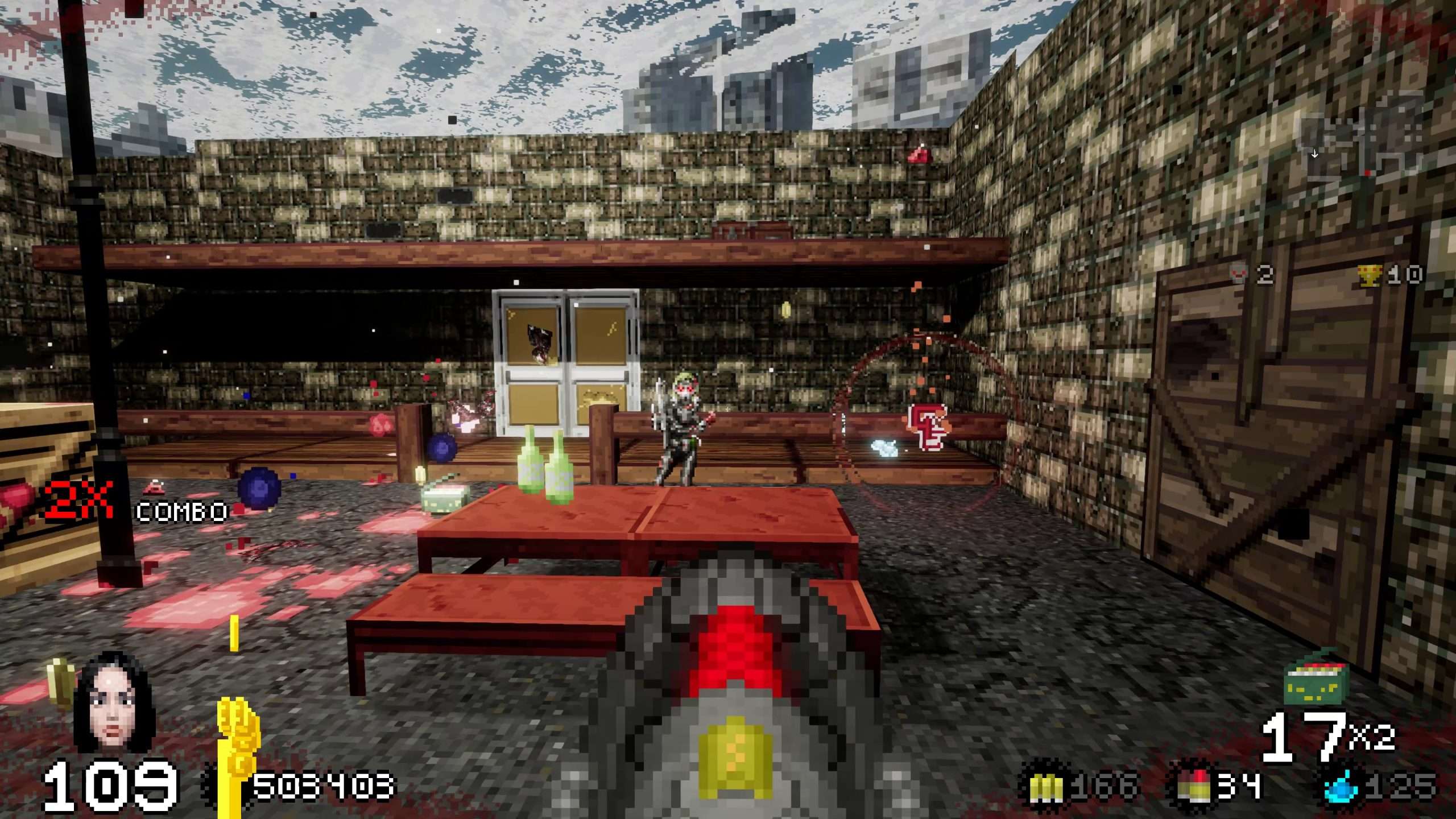
A player can initially carry 2 weapons, but there is a skill to have up to four equipped, with the rest of the gear staying in the inventory until the end of the level. At this point, a decision needs to be made, since the game will allow you to carry one weapon forward to the next level, while the rest are sold for money. A decision that can be hard to make when the weapons that piling up and you’re not sure if you should keep with the trusty weapon that has been with you a few levels or take a risk with a shiny new one.
Three mini-games, set within a fake Game Boy Advance SP screen, are where the patient gains new abilities. The first one is the skill tree which uses gold to unlock skills. The setup for this is based on Super Mario Bros. 3, in which there are eight world maps and each level is a short platforming section that unlocks the skill purchased once this small platform section is done. The second is inspired by Pokemon, in which topaz, a currency earned for each level defeated, monsters defeated in the Pokemon clone or swapping gold for topaz, unlocks more skills, but also adds modifier pills. Modifiers are things like extra gold, less damage taken, and more random event chances, but with more pills comes the chance to have enemies buff based on the toxic effect, which could be extra attack speed or bigger detection radius from the enemies.

The last game is the 2d scrolling shooter. This one offers new abilities like kicking exploding barrels, ledge climbing and even having a pet with you that can have its own small set of skills. This mode also has its own currency, jade, which is mainly gained from the Arena Mode found in the hospital, eight arenas that reward jade for each wave completed. I am not sure how many levels are in an arena, but I see an achievement for hitting 75, so there is at least that for all eight. If you do not want to play the mini-games to gain the unlocks in them, then just turn them off and you do not have to, although doing this will mean the coins/topaz/jade earned playing the game is lost, but it is never a huge amount that it would be that impactful for not doing it.
Visuals are heavily inspired by the past, as the game brings to the screen the huge pixel look of 90s shooters, heavily reminiscent of Duke Nukem 3D. 2D enemies pivot around to look at the player, and when looked from above appear as paper-thin pixels. Modernised effects are here, such as shadows and lighting, which can make the game look amazing at times, a contrast to the 90s influence with its simple pixel gun work and flat enemies. Having everything on “Epic” can add to some slowdown. Even an Nvidia 3090 had to submit to under 60fps when lots of light admitting bullets and shadows were cast at 4K resolution. This is probably down to optimisation, but with the ability to tweak resolution scaling and different graphical options, this can be resolved to keep a steady 60fps. On the audio side, Nightmare Reaper‘s sound effects are decent enough, but the standout is the amazing soundtrack created by Andrew Hulshult, the composer who took over the reins for the Doom Eternal expansions, brings his style of heavy metal to this game. If you enjoyed Doom Eternal‘s music, then you will enjoy this brilliant soundtrack, it just fits perfectly with the theme and action of the game.
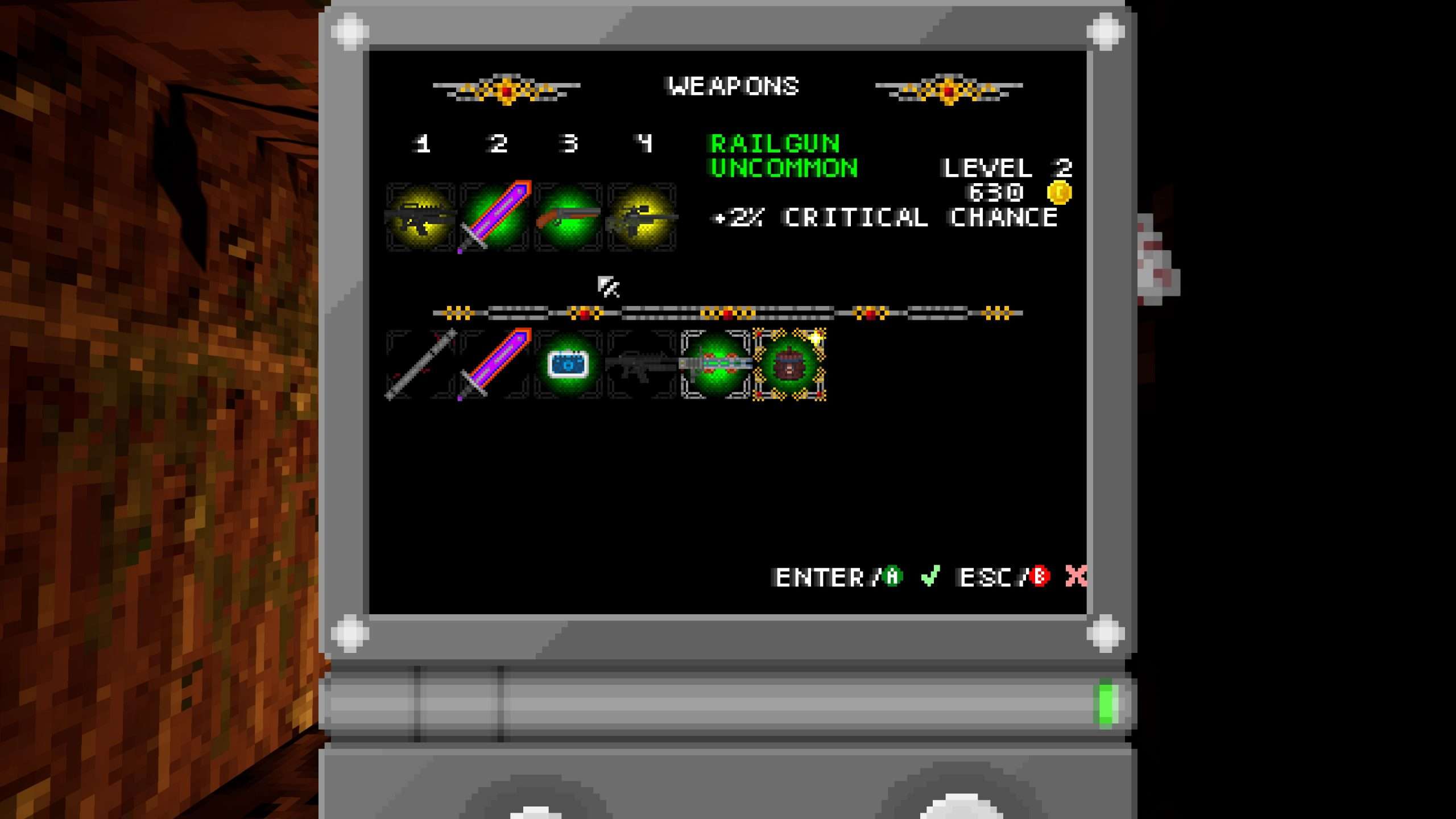
Nightmare Reaper is packed with neat ideas and somehow manages to make them all work together. The core of the game, the retro-inspired first-person shooting, feels extraordinary, and the huge amount of weapon variety and stats that drive their behaviour keep the combat refreshing and exciting. Level design is generally great, even with the element of precentral generation, there are enough reins to stop any weird behaviour across its 82 levels. Nightmare Reaper keeps going after the game is finished with its New Game+ mode offering even harder challenges, continuing the addictive loop of surprises. In the end, Nightmare Reaper is one of those indie games that should be classed as a gem. This is a wonderful labour of love with a lot of character, an addictive title that is happy for players to rip and tear through its nightmare dream to a banging soundtrack and rapturous combat. This is a bloodstained fountain of gratification that only the best daydreams offer.
